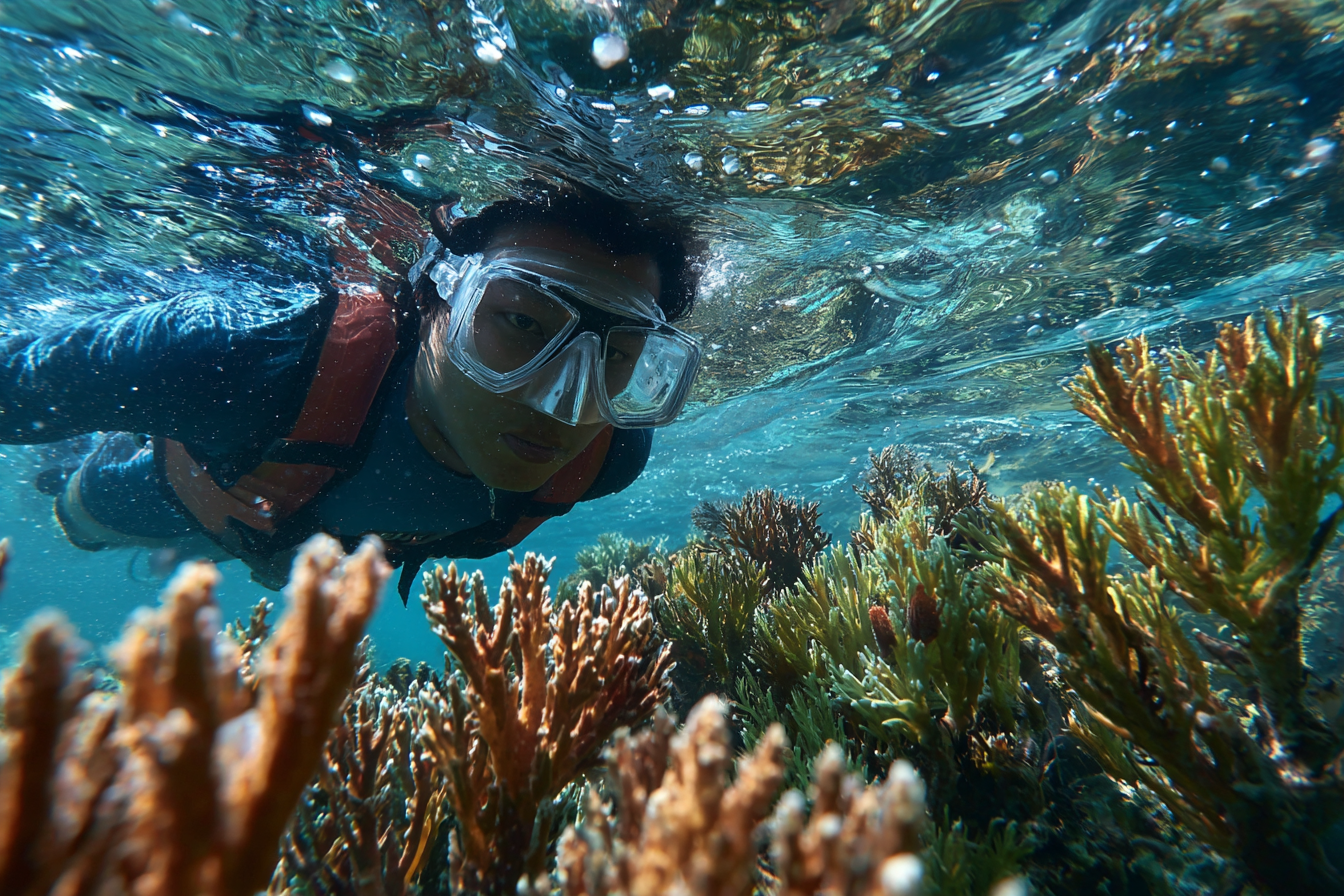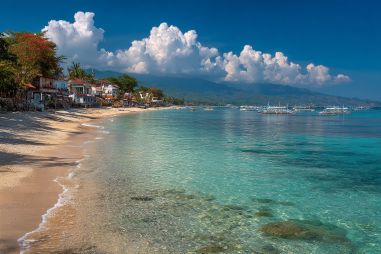Exploring the vibrant underwater world of Apo Island is a dream for many snorkeling enthusiasts. Known for its pristine coral reefs and rich marine biodiversity, Apo Island offers a spectacular snorkeling experience. However, enjoying this aquatic paradise safely requires some preparation and awareness. Whether you’re a seasoned snorkeler or a beginner, understanding essential snorkeling safety tips will help ensure that your adventure remains fun, safe, and respectful to the environment.
Importance of Snorkel Safety on Apo Island
Snorkeling on Apo Island is an incredible way to connect with nature, but it also comes with inherent risks if proper safety precautions aren’t followed. The ocean environment can be unpredictable; currents can shift, and encounters with marine animals require caution. Prioritizing safety helps prevent accidents such as drowning, injuries from sharp coral, or disruptions to marine life. Furthermore, knowing how to snorkel responsibly protects the fragile ecosystems that make Apo Island so special. By being mindful, snorkelers contribute to the preservation of this underwater treasure for future visitors.
Recommended Gear and Proper Use
A successful and safe snorkeling trip starts with the right equipment. Here’s what you need to bring and how to use each item effectively:
- Mask and Snorkel: Choose a well-fitting mask that creates a watertight seal around your face without causing discomfort. Test your mask for leaks before you dive. The snorkel should be comfortable and easy to clear if water enters.
- Snorkeling Fins: Fins help increase your swimming efficiency and conserve energy. Ensure they fit snugly without causing blisters. Practice swimming with fins before entering the water.
- Life Vest or Snorkeling Vest: Even if you are a strong swimmer, wearing a vest adds buoyancy and helps conserve energy, especially in deeper or current-prone areas around Apo Island.
- Protective Clothing: A rash guard or wetsuit protects your skin from sunburn, jellyfish stings, and scrapes from coral.
- Waterproof Bag: Useful for keeping valuables dry and safe while snorkeling.
Before heading out, make sure you are comfortable using all your gear. Practice breathing through the snorkel while your face is in the water and get familiar with clearing the snorkel if it fills with water.
Environmental Considerations to Protect Coral and Wildlife
Apo Island is celebrated for its marine sanctuary, home to vibrant corals and numerous species of fish, turtles, and other sea creatures. As visitors, it is crucial to minimize our impact on this delicate ecosystem:
- Do Not Touch or Step on Coral: Coral reefs are very sensitive and easily damaged by touch. Avoid standing, walking, or grabbing coral formations.
- Keep a Safe Distance from Marine Animals: Admire the wildlife from afar without disturbing their natural behavior. Avoid chasing or feeding fish and turtles.
- Use Reef-Safe Sunscreen: Many sunscreens contain chemicals that harm coral reefs. Opt for reef-safe formulas that do not contain oxybenzone or octinoxate.
- Avoid Littering: Take out everything you bring in to Apo Island. Plastic and other waste can severely affect marine life.
- Follow Local Rules and Guidance: Many areas of the marine sanctuary have restrictions designed to protect the habitat. Respect signage and instructions from local guides or rangers.
How to Avoid Common Snorkeling Hazards
Even the most experienced snorkelers can encounter challenges. Here are common hazards and how to prevent them:
- Currents and Tides: Check local tide and weather conditions before snorkeling. Avoid snorkeling alone or venturing too far offshore, especially during strong currents.
- Sharp Coral and Rocks: Be cautious when entering and exiting the water. Avoid contact with jagged surfaces that can cause cuts or infections.
- Marine Animals: While most creatures are non-aggressive, some, like sea urchins and lionfish, can sting or puncture if provoked. Watch where you place your hands and feet.
- Sun Exposure: Wear protective clothing and reapply reef-safe sunscreen regularly to prevent sunburn.
- Equipment Failure: Inspect your gear before snorkeling. Make sure your mask strap isn’t loose, fins aren’t cracked, and your snorkel is unobstructed.
When and Where to Snorkel Safely
Timing and location can greatly affect your snorkeling experience and safety on Apo Island. Here are some tips to help you plan:
- Best Time of Day: Early mornings usually provide calmer waters and better visibility. Avoid snorkeling late in the afternoon when fatigue and visibility issues can arise.
- Preferred Locations: Popular snorkeling spots around Apo Island include the Marine Sanctuary near the shore and the Turtle Point. Choose designated snorkeling areas to avoid restricted zones and minimize habitat disturbance.
- Avoid Crowded Areas: Crowds can increase the chance of accidents and environmental damage. Opt for less busy spots or plan your visit during off-peak seasons.
Emergency Procedures and First Aid
Being prepared to respond to emergencies is essential for safe snorkeling. Here’s what to keep in mind:
- Buddy System: Always snorkel with a partner or under the supervision of a guide. This ensures help is nearby if you encounter trouble.
- Know How to Signal for Help: Use hand signals or wave your arm to attract attention if you are in distress.
- Basic First Aid: Familiarize yourself with treatment for common snorkeling injuries such as jellyfish stings, cuts, and sunburn. Clean wounds thoroughly and seek medical aid if necessary.
- Local Emergency Contacts: Ask your tour operator or accommodation about emergency services on Apo Island and keep their numbers handy.
Advice for Beginners and Families
For those new to snorkeling or traveling with children, safety takes on even greater importance. Here are some additional tips:
- Start with a Lesson: Beginners should consider taking a guided snorkeling lesson to learn essential skills and safety practices.
- Choose Shallow, Calm Waters: Perfect for practice and safe observation without strong currents or deep drop-offs.
- Use Floatation Devices: Kids and less confident swimmers benefit from snorkeling vests or life jackets.
- Stay Close to Shore: Avoid deep or rough waters, especially with young children.
- Constant Supervision: Never leave children unattended in or near the water.
Recap of Best Safety Practices
Enjoying snorkeling on Apo Island responsibly means protecting both yourself and the environment. Key safety practices include:
- Wear appropriate and well-fitting gear, including mask, fins, and life vest.
- Learn and respect the local marine environment—avoid touching coral or disturbing wildlife.
- Be aware of ocean conditions like currents and tides before entering the water.
- Snorkel with a buddy and know how to signal for help in an emergency.
- Use reef-safe sunscreen and limit sun exposure.
- Seek guidance or lessons if you are new to snorkeling or bringing family members who are beginners.
With these precautions, your snorkeling adventure on Apo Island can be both breathtaking and safe, allowing you to immerse yourself in an underwater haven that you’ll remember fondly for years to come.







